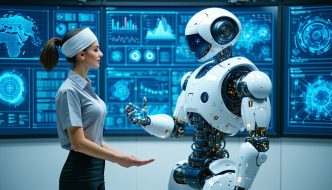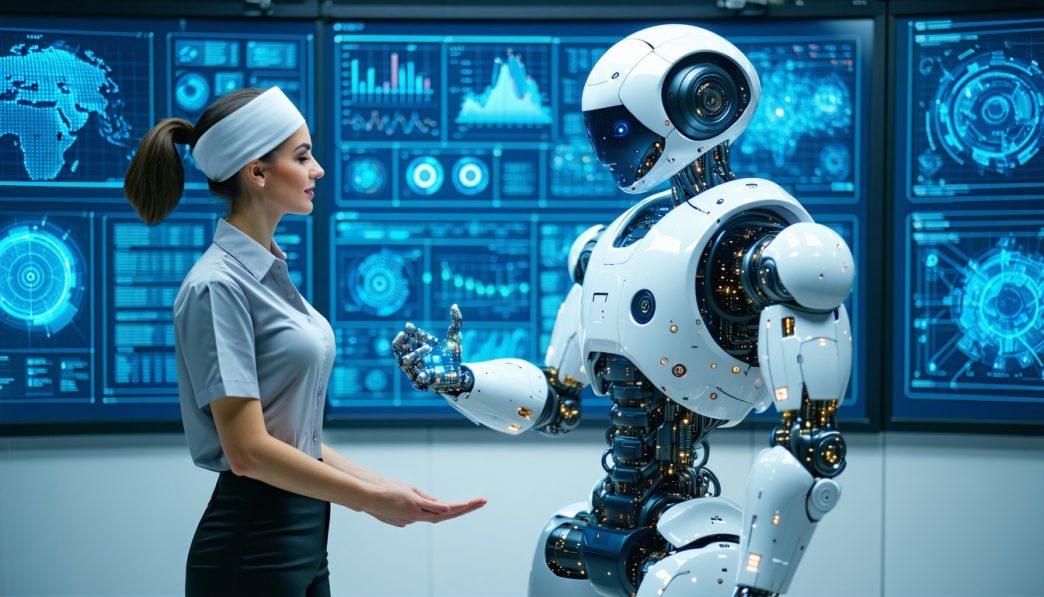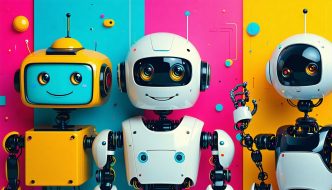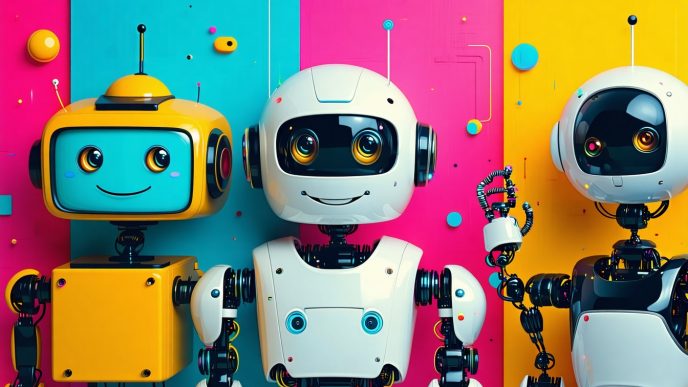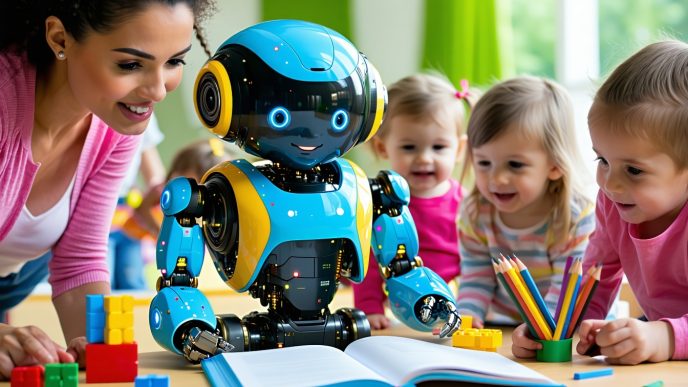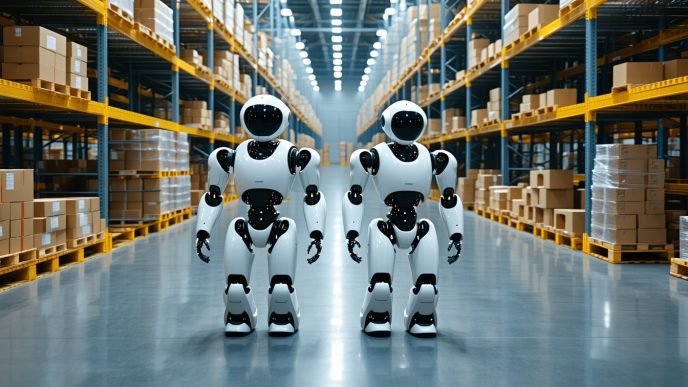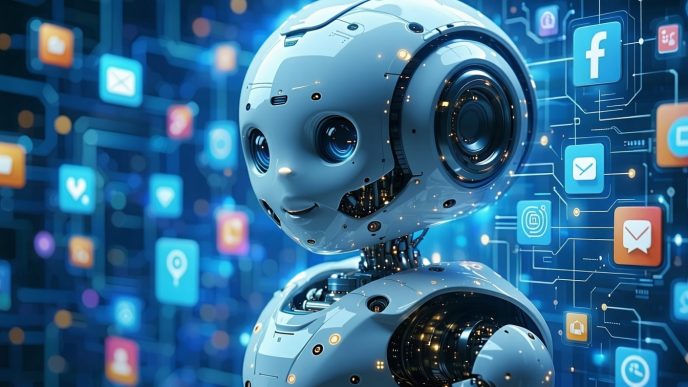Unveiling Humanoid Robots
As technology advances, humanoid robots are becoming increasingly prominent in various sectors. These robots mimic human appearance and behavior, serving a broad spectrum of purposes from assisting in household tasks to performing more complex activities in workplaces.
The Growing Role of Humanoid Robots
Humanoid robots are gradually infiltrating daily life and industries. Their ability to interact with people and their surrounding environment makes them suitable for a variety of applications:
| Sector | Applications |
|---|---|
| Home | Personal companions, assistance with household chores |
| Healthcare | Patient care, rehabilitation support |
| Industry | Manufacturing tasks, quality control |
| Education | Teaching aids, engaging students in learning |
| Security | Surveillance, crowd monitoring |
These robots are designed to improve efficiency and enhance human capabilities, which leads to a growing reliance on them for both personal and professional use. The demand for humanoid robots continues to rise as companies invest in innovation and integration into existing systems. For more information on humanoid robots tailored for household settings, check our article on humanoid robots for home use.
Understanding the Concept of Humanoid Robot Training Systems
Training is an essential component for humanoid robots, enabling them to learn and adapt to new tasks. Humanoid robot training systems employ various methodologies to facilitate this learning process.
The following are key components of humanoid robot training:
| Component | Description |
|---|---|
| Data Gathering | Robots gather data from sensors and external environments to understand tasks. |
| Algorithm Processing | Learning algorithms process the data to develop decision-making skills. |
| Feedback Systems | Robots receive feedback from their actions to refine their skills and improve efficiency. |
These training systems typically incorporate techniques such as supervised learning, unsupervised learning, reinforcement learning, and transfer learning to enhance the robot’s ability to adopt new functions. Each approach has its strengths and is chosen based on the specific tasks the robot is intended to perform.
Understanding these systems is vital for harnessing the full potential of humanoid robots. For further insights into the different types of learning methods, refer to our sections on supervised learning, unsupervised learning, reinforcement learning, and transfer learning.
Basics of Robot Learning
How Robots Learn New Tasks
Humanoid robots learn new tasks through various programming methods that allow them to adapt to their environment and perform functions as instructed. The process typically involves inputting data from sensors, utilizing machine learning algorithms, and applying reinforcement techniques. These systems enable the robot to process information from its surroundings, recognize patterns, and refine its actions based on feedback.
The learning process can be illustrated through a basic flow:
| Stage | Description |
|---|---|
| Data Input | The robot receives information from its surroundings using sensors. |
| Processing | Information is analyzed using algorithms to understand the task. |
| Learning | The robot adjusts its actions based on outcomes and feedback. |
| Task Optimization | Continuous improvement through practice and iterations. |
Different humanoid robot training systems, such as those seen in models like the Tesla Optimus robot or Sanctuary AI Phoenix, leverage machine learning to enhance their performance in various tasks.
Importance of Training for Robots
Training is essential for humanoid robots as it equips them with the ability to perform their intended functions effectively. Just like humans, the performance of robots can be significantly improved through practice and exposure to various scenarios. Effective training allows these machines to understand complex tasks, makes them more efficient, and enhances their reliability in real-world applications.
The key benefits of training humanoid robots include:
| Benefit | Description |
|---|---|
| Enhanced Efficiency | Well-trained robots complete tasks faster and with greater accuracy. |
| Adaptive Learning | Robots can respond to new situations based on previous experiences. |
| Safety Improvements | Training reduces errors, which can lead to accidents or malfunctions. |
Integrating advanced training systems, such as humanoid robot sensors and AI models in humanoid robots, allows robots to interact seamlessly with their environment. The combination of learning approaches and practical training ensures that humanoid robots can become valuable contributors in various fields, from healthcare to education.
Types of Humanoid Robot Training Systems
Humanoid robot training systems utilize various learning techniques that enable robots to adapt and perform tasks efficiently. Understanding these systems is key to harnessing the potential of humanoid robots.
Supervised Learning
Supervised learning is a method where robots learn from labeled data. Human operators provide examples of correct inputs and desired outputs, allowing the robot to learn by making predictions based on this information. This approach is particularly beneficial for tasks that require a high level of accuracy and precision.
| Feature | Description |
|---|---|
| Data Type | Labeled data |
| Application | Object recognition, task classification |
| Example | Teaching robots to identify and sort objects |
Unsupervised Learning
Unsupervised learning involves the robot working with unlabeled data. The robot identifies patterns or structures in the data without direct supervision. This method is useful for discovering hidden features or relationships, making it ideal for complex tasks where the desired outcomes are not explicitly defined.
| Feature | Description |
|---|---|
| Data Type | Unlabeled data |
| Application | Clustering, anomaly detection |
| Example | Grouping similar objects based on characteristics |
Reinforcement Learning
Reinforcement learning is a dynamic approach where robots learn from their environment by taking actions and receiving feedback through rewards or penalties. This trial-and-error method helps robots to develop strategies to maximize their performance over time. It is particularly effective for tasks that require decision-making in unpredictable environments.
| Feature | Description |
|---|---|
| Data Type | Rewards and penalties |
| Application | Game playing, autonomous navigation |
| Example | Robots learning to navigate mazes through exploration |
Transfer Learning
Transfer learning allows robots to apply knowledge gained from one task to another related task. This approach significantly speeds up the training process and improves performance by leveraging previously learned information. It is especially useful when data for the new task is sparse or hard to obtain.
| Feature | Description |
|---|---|
| Data Type | Pre-trained models |
| Application | Adaptation to new tasks with minimal retraining |
| Example | A robot trained in sorting different objects adapting to a new sorting task |
Understanding these humanoid robot training systems helps in assessing the capabilities and potential applications of specific robot models. For inquiries on specific humanoid robots, one might explore resources on humanoid robots for home use or the capabilities of the Tesla Optimus robot.
Applications of Humanoid Robot Training
Humanoid robots have the potential to transform various industries through their training capabilities. These machines are increasingly being used to perform a wide array of tasks, making their training systems significant across multiple sectors.
Industrial Tasks
In the industrial sector, humanoid robots are utilized to automate repetitive tasks and enhance productivity. They can be trained to perform complex assembly processes, quality control inspections, and material handling. Training systems enable these robots to learn specific tasks efficiently while adapting to different operational conditions.
| Task Type | Application | Benefits |
|---|---|---|
| Assembly Line Work | Participation in production | Increased efficiency and speed |
| Quality Control | Inspection of products | Reduced human error |
| Material Handling | Managing inventory | Streamlined operations |
Service Sector
Humanoid robots are making strides in the service sector, where they interact with customers and assist in various roles. They can be trained to perform duties such as reception, guidance in retail environments, and customer support in hospitality. These robots can learn from interactions, improving their responsiveness and service quality over time.
| Service Type | Application | Benefits |
|---|---|---|
| Reception Services | Greeting and assisting customers | Enhanced guest experience |
| Retail Assistance | Helping customers find products | Improved shopping efficiency |
| Customer Support | Answering inquiries | 24/7 availability |
Healthcare and Medical Industry
The healthcare industry is harnessing humanoid robots for tasks ranging from patient care to surgical assistance. Training systems allow these robots to learn how to interact with patients gently, manage medication schedules, or assist doctors during procedures. This application not only improves efficiency but also enhances the quality of care provided.
| Healthcare Task | Application | Benefits |
|---|---|---|
| Patient Care | Assisting with daily needs | Improved care and attention |
| Medication Management | Administering medication | Increased adherence |
| Surgical Assistance | Supporting surgeons during operations | Enhanced precision in procedures |
Humanoid robot training systems are instrumental in paving the way for advancements in these applications. By enabling robots to learn and adapt, industries can expect increased efficiency and enhanced service quality. For further information on humanoid robots’ various uses, explore our articles on humanoid robots for home use and humanoid robots in healthcare.
Challenges in Humanoid Robot Training
Humanoid robot training systems face several challenges that must be addressed for the effective deployment of these advanced machines. Here, we explore three main areas of concern: overcoming limitations, ethical considerations, and potential future developments.
Overcoming Limitations
Humanoid robots, despite their advancements, encounter various limitations in their training systems. These limitations can range from hardware constraints to software capabilities. Key challenges include:
| Limitation | Description |
|---|---|
| Sensor Accuracy | Sensors may struggle to accurately perceive and interpret complex environments, affecting the robot’s ability to learn tasks effectively. |
| Data Quality | The effectiveness of training algorithms heavily relies on the quality of data used, which can be inconsistent or biased. |
| Adaptability | Many humanoid robots have difficulty adapting to new tasks outside their training framework, limiting their versatility. |
Improving sensor technology, enhancing software algorithms, and utilizing diverse training data sets can help mitigate these limitations.
Ethical Considerations in Robot Training
The training of humanoid robots raises important ethical issues that need careful consideration. Some of these concerns include:
| Ethical Concern | Description |
|---|---|
| Decision Making | As robots become more autonomous, the moral implications of their decision-making processes become a key point of debate. |
| Privacy | The data collected during training could infringe on personal privacy, especially when robots operate in sensitive environments. |
| Job Displacement | As humanoid robots become more capable, there is a fear of job loss across various sectors due to automation. |
Addressing these ethical considerations is crucial for the acceptance and integration of humanoid robots into society.
Future Developments in Humanoid Robot Learning
As technology continues to evolve, several advancements are anticipated in humanoid robot training systems. Potential future developments may include:
| Development | Description |
|---|---|
| Enhanced Learning Algorithms | Improved algorithms that can learn from fewer examples and adapt more quickly to new tasks will likely emerge. |
| Greater Collaboration | Robots may be designed to work collaboratively with humans, learning from shared experiences. |
| Integration with AI Models | Upcoming innovations could focus on integrating sophisticated AI models to enhance the decision-making abilities of humanoid robots. |
The continuous evolution of humanoid robot training systems promises to expand the capabilities and applications of these machines, paving the way for more effective and efficient solutions in various fields, including healthcare.
